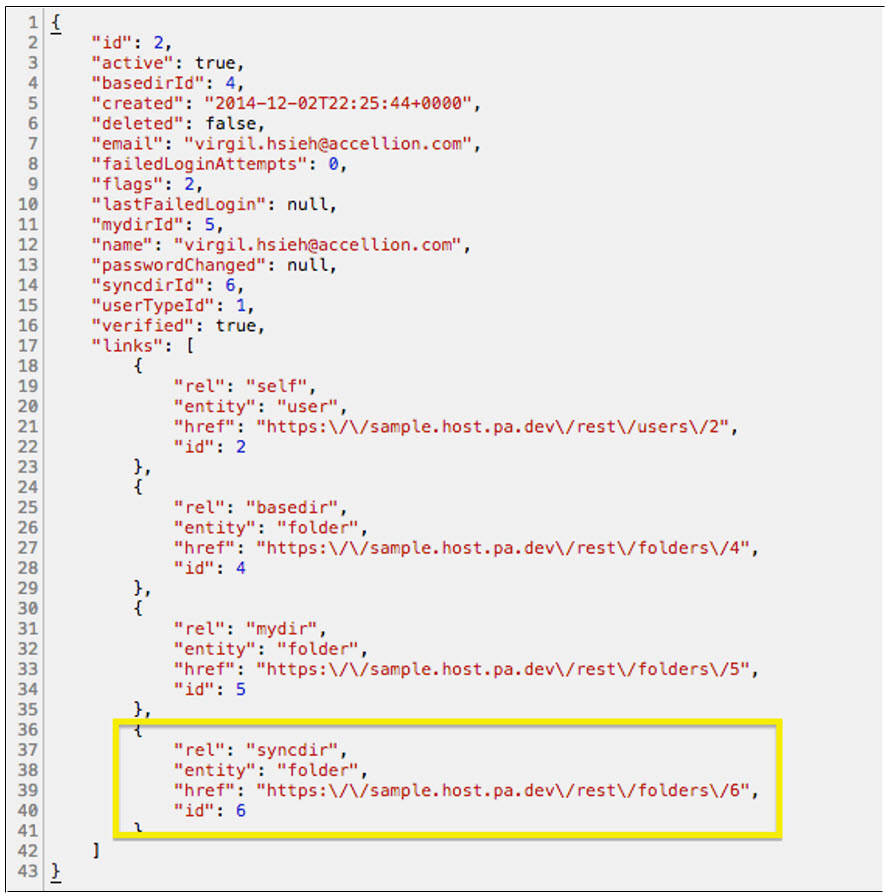Use IDs
Another request can be made that uses an id to uniquely identify the object you want to get. In this example a folder object is being created that represents the My Folder folder for the current user.
The folders entity does not have an endpoint to return the current user's My Folder folder. The general endpoint for getting folders visible to the current user will have to be used, and the id of the folder must be given in the request to specify which folder to get.

There are a number of ways to get the id of the My Folder folder for the current user.
Make the GET /rest/users/me request. In the response of that request, there is a links array, in which there is an element identified as syncdir. The id associated with that element is the id of the My Folder folder for this user.

This method of obtaining the id is specific to the My Folder folder of the user, and it cannot be used to get the id of any folder. A more general way to obtain the id of a folder is to navigate to that folder in the Kiteworks UI. Once there, observe the URL.
The URL should read https:///#/folder/ followed by a number. That number is the id of the folder that is currently open.
In some instances URLs are not available in the id. In those cases, the best way to get the id of a specific object would be to use the corresponding endpoint that lists all instances of the class you are interested in. From the list, you can then pick which instance is the one you are interested in, and from there, you can get the id.
Plug in the id of the My Folder folder in the web request and the response will be a JSON payload that contains information relevant to that folder.
